ERP or Enterprise Resource Planning is a software system designed to unify all department operations from manufacturing to sales in one single platform. While this may require a significant investment, the long-term benefits in cost and efficiency are undeniable. But how can you seamlessly integrate an ERP system with your Magento stores? Let’s dive into this article to better understand the integration benefits, strategies, and practices. You’ll also find a list of key ERP features and the top 8 Magento ERP integrations, carefully selected based on customer reviews and vital criteria like pricing, scalability, and ease of use.
- What are ERP integrations?
- 5 advantages of ERP integration for your Magento stores
- 10 ERP software features for businesses
- Strategies to integrate ERP with Magento
- How to integrate Magento with ERP?
- 3 steps for a smooth ERP integration with Magento
- Top 8 Magento ERP integrations
- How to choose the right ERP solution?
- Conclusion
- FAQs
What are ERP integrations?

ERP integrations are connecting an ERP system with other software applications or systems to streamline different business processes, including:
- Supply chain management
- Product planning
- Procurement
- Manufacturing
- Sales and marketing
- Customer relationship management
- Finance and accounting
- Risk management
- Project management
It centralizes all information of those processes into a single database. ERP integration, physically speaking, is the activity that connects those separate business applications in a unified ERP. At the data level, it connects data from different business processes to create a single source of truth.
Magento ERP integration means connecting your Magento platform with an ERP system for inter-communication to synchronize data, providing real-time status and updates. For example, Magento Exact integration means connecting Magento eCommerce platform and Exact ERP. When working separately, ERP systems will handle functions like accounting, HR, purchasing, and invoicing, while Magento focuses on product lifecycle, including inventory, fulfillment, and customers. Although Magento is a robust eCommerce platform, it lacks comprehensive capabilities for overall business management, making integration essential. To see why integration is a game changer, let’s explore its benefits in more detail.
5 advantages of ERP integration for your Magento stores
Enhance efficiency
By automating essential business tasks, companies reduce the chances of mistakes to save more time and energy. With accurate, real-time data, managers are better equipped to make smart decisions to boost efficiency and improve performance.
Streamline inventory control
Integrating Magento with an ERP system transforms the way businesses manage inventory. By syncing and unifying data in one centralized system, it eliminates the hassle of using spreadsheets. This provides low-stock alerts and gives businesses real-time insights into stock levels across warehouses and during transit.
Optimize operational costs
Businesses won’t need multiple systems to manage operational aspects. This consolidation helps cut costs and delivers accurate data for performance evaluation.

Foster customer experience
According to Sprinklr, 74% of customers say they are more likely to stay loyal to a brand when they feel recognized and valued. With a complete view of customer data, businesses can better understand customer needs to create a seamless shopping experience. As a result, customers enjoy a consistent journey where they can easily make orders and track product movements, which improves satisfaction and loyalty.
Scale flexibly
Magento 2 integration with ERP allows businesses to scale and adapt to changing needs. The ERP integration ensures stable performance. Even when managing a larger number of SKUs, it can still maintain speed and operational efficiency to support business expansion.
10 ERP software features for businesses
ERP software aims to manage many processes across departments in one place. While different ERP systems offer different functionalities, their core goal remains to enhance overall efficiency. Due to the unique needs of your eCommerce business, you may look for specific features in an ERP for Adobe Commerce. However, there are several common capabilities that every company should consider when evaluating an ERP solution.

Must-have ERP features for all business sizes
Data analysis and reporting: With strong reporting tools, ERP systems collect information and transform it into visual elements like dashboards and reports. From this, stakeholders can easily access, and interpret data for insights, and respond to emerging trends or issues.
Financial management: An ERP system can help track, report, and analyze various processes, such as capital investments, funding, cash flow, and financial controls. As a result, businesses can enhance compliance and improve overall financial management.
Accounting: ERP accounting provides a repository for the company to facilitate viewing core activities that range from transactions, invoicing, and payments to budgeting. Key functions include:
- Automate data tracking and processing to detect anomalies and ensure accurate tax payments
- Forecast cashflow
- Generate detailed reports on budgets, expenses, and assets
Sales and Marketing: A smooth sales and marketing operation helps gain customer satisfaction leading to greater revenue. However, as more people get involved, the complexity of tasks and potential issues may increase. But an ERP system can assist your team:
- Generate quotes, orders, and invoices
- Segment customers
- Assign leads to team members
- Customize reports and forecast
- Create basic email marketing and other kinds of content for social media
- Build campaigns and analyze performance
- Track key metrics, such as reach, engagement, conversion rates, revenue, and qualified leads
Inventory management: ERP software allows you to track inventory quantity across locations from purchasing and replenishment to final sales. Based on predefined rules, the ERP also helps you auto-generate orders, forecast inventory requirements, and calculate inventory value.
Nice-to-have ERP features for medium-to-large businesses
Large businesses need more specialized and advanced ERP features to cope with more complex operations.
CRM (Customer Relationship Management): Every business wants to know their customers well to improve overall service. With the CRM function in ERP, you can collect all records in an accessible database where you can find order history and new sales leads, and automate processes such as:
- Segment customers into demographics, locations, and purchase activities
- Manage all stages of the customer lifecycle
- Send notifications through email or SMS
- Centralize customer queries
- Track interactions across different channels
Supply Chain Management (SCM): You can engage in procurement, shipping, inventory, and logistics as well as demand planning and forecasting to optimize and align procurement processes.
Human Resources (HR): Handling personnel costs is such a significant task for many businesses. With the HR module in ERP, you and your HR team can automatically manage employee information, commissions, payroll, hiring, onboarding, and timekeeping.
Manufacturing: Production planning and resource management tools in ERP help companies optimize labor, machinery, and materials usage. Companies also leverage the system for cost tracking, gaining full visibility into each stage, and preventing delays and waste.
Project management: This means tracking the whole process from planning to execution. Using an eCommerce ERP, organizations tie up resources in a place and allow detailed insights into the budget spent, progress, and backlog for greater success.
Strategies to integrate ERP with Magento
There are two main methods for Magento integration with ERP, each representing distinct approaches: direct and indirect. Below is a detailed overview of these options.
Point-to-point integration
Point-to-point (P2P) integration or peer-to-peer integration, is a straightforward approach to connecting two systems. It usually involves custom coding, APIs, or a mix of both to create a direct, one-to-one connection. This method enables seamless data exchange between Magento and the ERP for smooth and efficient data flow.
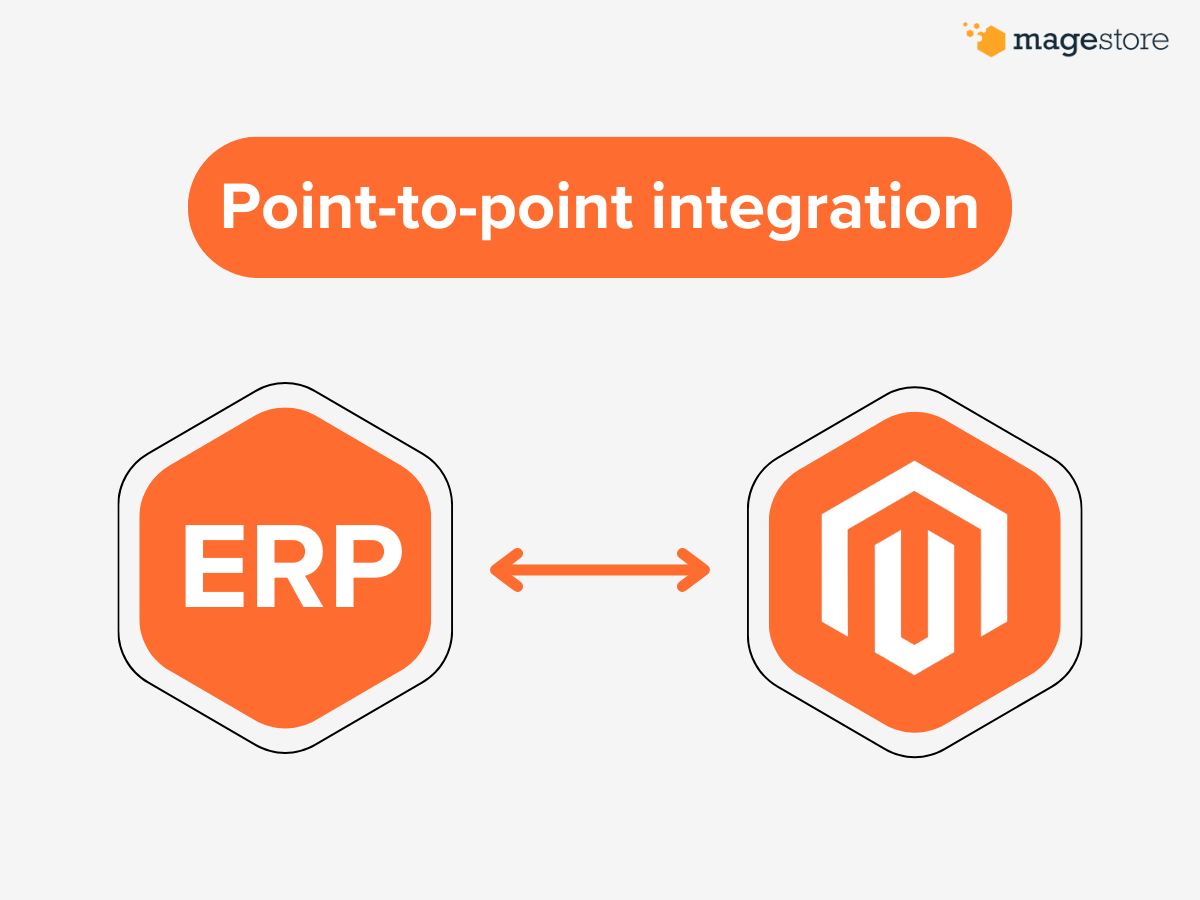
Pros:
- No need for intermediaries
- Reduce the chances of errors and bottlenecks
- Simple and direct
- Faster data synchronization
- Easy to customize for specific needs
Cons:
- Depend on skilled developers
- Difficult to maintain multiple direct connections
- Limit scalability for growing businesses
Best for: Small businesses looking for an affordable solution.
Enterprise Service Bus (ESB) integration
Enterprise Service Bus (ESB) integration uses a centralized message broker that manages communication between various systems. Unlike point-to-point integration, ESB follows the Service-Oriented Architecture (SOA), where a communication bus facilitates data exchange between applications. In this model, the ESB sits between different applications (such as ERP, Magento, CRM, and others) and handles their communication. Instead of applications connecting directly to each other, they connect to the “bus”, which routes messages and services across the network.
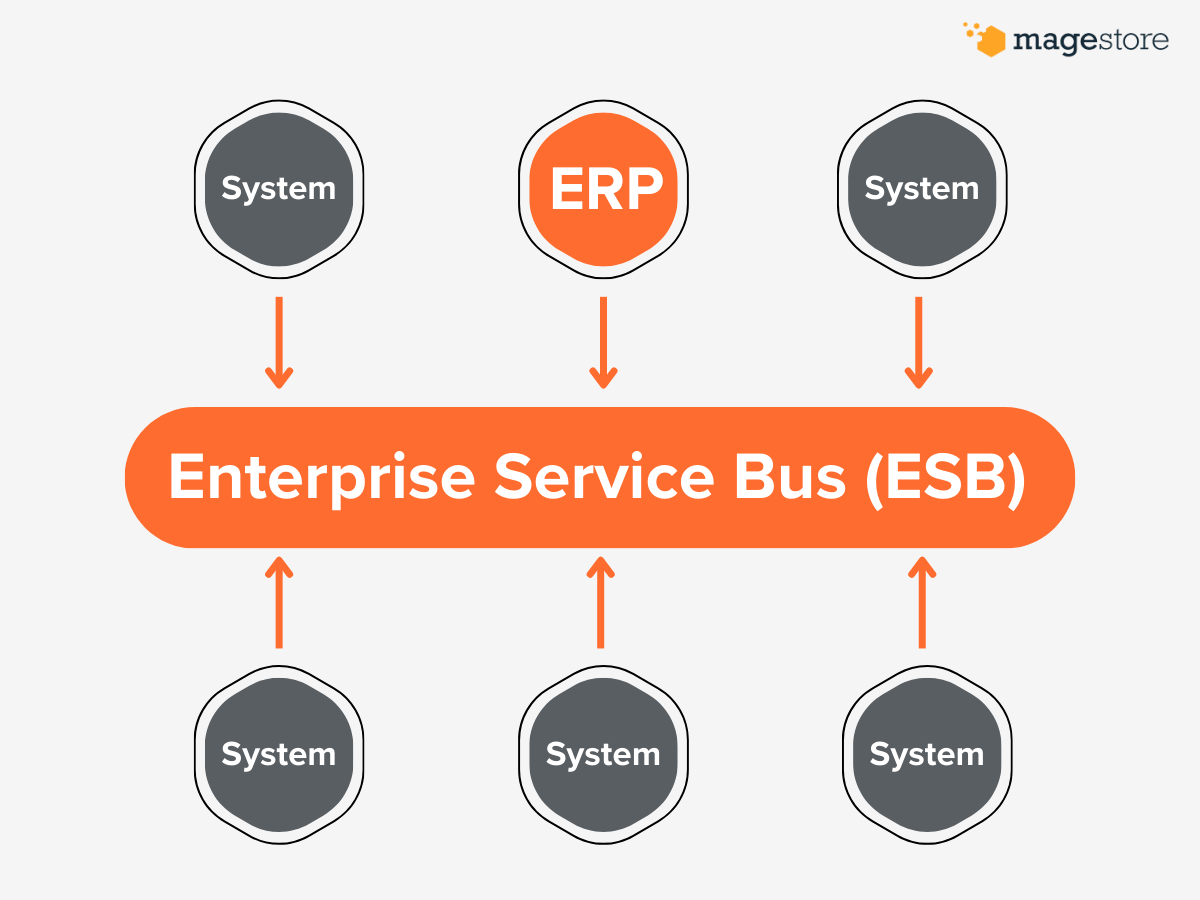
Pros:
- Adding new software to the bus won’t disrupt the existing workflow.
- Provide prebuilt communication services for common integration tasks
- Allow comprehensive monitoring of data flow for quick issue detection
- Improve scalability due to indirect communication via the “bus”
- Unified configuration
Cons:
- Depend on skilled developers
- Maintenance costs can be expensive
- Become a bottleneck when there are multiple upgrade demands at the same time, causing each one to wait in a queue
Best for: Medium to large enterprises that need to integrate multiple systems, like ERP, CRM, POS, and others.
How to integrate Magento with ERP?
There are three main ways to integrate Magento with an ERP system: custom integrations, prebuilt connectors, and iPaaS solutions. All of these methods rely on API-based communication to ensure seamless data exchange and synchronization.
Build a custom integration from scratch
You can use the APIs of Magento and the ERP system to create a custom solution. This approach offers businesses full control over the integration process, eliminating the need for third-party connectors and enabling highly customized data management and security.
Use prebuilt connectors
ERP connectors are ready-made middleware solutions designed to bridge communication between the two systems. Businesses can purchase these connectors from third-party providers, and then install and customize them within Magento. Some ERP providers also offer free connectors, which helps reduce the financial burden. This approach provides several key benefits, including:
- More cost-effective than developing custom integrations from scratch
- Quicker deployment time and easy configuration
- Support from dedicated teams that ensure compatibility between Magento and the ERP system
Integration Platform as a Service (iPaaS)
The platform functions as a mediator to facilitate the conversion and process of data. It pulls information from different systems, analyzes and converts it into a format that the ERP system can understand, and then sends it to the ERP for use.
In this context, iPaaS is a cloud-based solution offering self-service tools to simplify and automate data integration across applications. Through its pre-built connectors, transformation tools, and orchestration capabilities, iPaaS connects disparate systems and ensures smooth data flow. Key features include:
- Drag-and-drop functionality and easy configuration
- Support for data transformation and mapping
- Orchestration of data flow between applications
- Real-time data processing
Tips for picking the most suitable tool
When choosing the most appropriate solution for the integration of Magento with ERP, it’s necessary to consider many aspects: business size, costs, and customization requirements.
- Companies requiring complex and tailored integration can build their own connectors to have full control over the data transfer. However, this approach may demand much time and resources. Based on our experiences, we’d recommend that you choose a read-made connector with customizability so you can easily modify it to your changing needs. That will save you much time and effort starting from the ground up.
- Small and medium-sized businesses can consider pre-built connectors, which are more cost-effective and ready to use.
- iPaaS is a suitable option for companies with multiple applications that need to link with each other. However, businesses must assess the long-term costs as they scale.
3 steps for a smooth ERP integration with Magento
Step 1: Define your business needs and goals
Before starting the Magento 2 ERP integration process, you need to clarify your business objectives such as to have a central view of order, customer, or inventory information. This helps identify which data needs to be synchronized between the ERP and your Magento sites. Proper planning also ensures that your connector doesn’t fail due to data overload or mismatches. For a smooth workflow, you should determine the sync direction and frequency based on your management and reporting needs. Proper planning also ensures that your connector doesn’t fail due to data overload or mismatches.
Step 2: Assess your current systems
Reviewing your Magento setup and ERP system is essential to comprehend your business’s current state. From this evaluation, you can identify both system capabilities in terms of data formats and APIs. Thus, you can confirm whether the current system setup can handle the sync requests you’ve decided in Step 1.
Step 3: Choose the right time to integrate systems
The process can be time-consuming and require stakeholder involvement. That’s why it’s important to estimate and set a clear timeline to avoid sales season or other critical business periods. Additionally, ensure all departments are informed so you have their full support for a successful implementation.
Top 8 Magento ERP integrations
1. Magestore ERP for Magento

Magestore ERP for Magento is a powerful Magento-native solution that offers direct integration with your Magento site. Thanks to this natural integration, Magestore ERP eliminates the need for a connector to share data with Magento stores. All departments can collaborate effectively and streamline operations for comprehensive efficiency.
- Type: Web-based
- Key features:
- Inventory management
- Purchasing management
- Order management
- Employee management
- Reports
- Key functions:
- Track stock levels from multiple locations
- Quickly add new items by scanning them into the system
- Generate purchase orders directly from demand forecasts or backorder lists
- Manage order fulfillment in five easy steps: Assign – Allocate – Pick – Pack – Ship
- Set distinct access levels for managers and employees
- Provide advanced inventory reporting for decision-making
- Pricing: Contact for a quote
- Pros:
- Direct connection with Magento, no integration cost
- Scalable and customizable
- Real-time data synchronization
- Affordable for small and medium businesses with a single upfront cost
- One dedicated team throughout the project
- Cons: May not be suitable for companies using other platforms
- Best for: Small to mid-size retail businesses
2. Oracle ERP Cloud
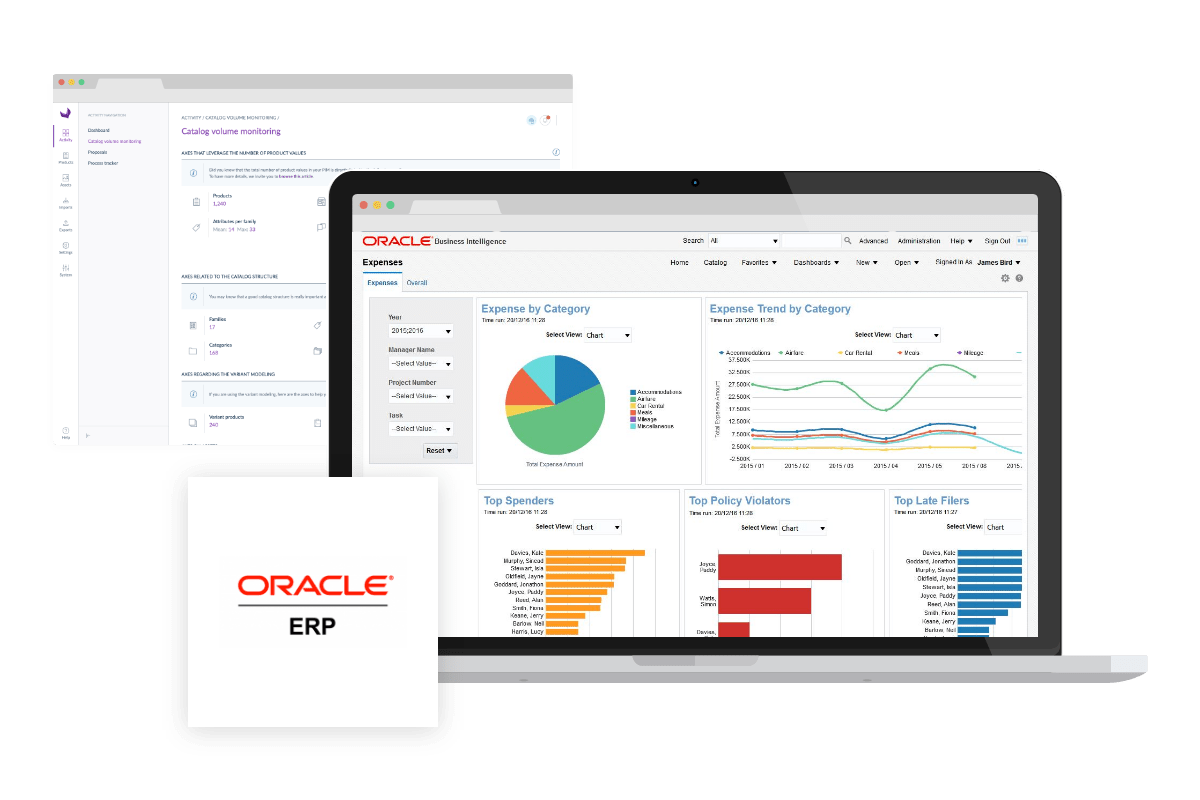
Oracle is one of the leading giants in the field of data systems, standing as the second-largest software company in 2024. Oracle ERP Cloud is one part of the Oracle E-Business Suite. Depending on your business demand, you can select only this ERP application or the whole suite because each component has a separate license. Most leading companies in the world, such as Netflix, LinkedIn, and Philips are using Oracle to securely keep data and automate their routine processes for cost reduction and efficiency boost.
- Type: Cloud-based
- Key features:
- Financials
- Project management
- Procurement
- Risk management and compliance
- Enterprise performance management (EPM)
- Supply chain and manufacturing
- ERP analytics
- Key functions:
- Eliminate data redundancy and duplication
- Exchange data automatically from Magento into Oracle ERP and vice versa
- Transfer information in real time and high security
- Synchronize new orders automatically
- Synchronize all updates bi-directionally
- Pricing: Start from $625/ month, with a 3-year contract requirement
- Pros:
- Easily scale with business growth
- Work flexibly with other applications
- Integrate data in real-time
- Offer exceptional user experience through its intuitive interface
- Provide robust analytical reporting tools
- Cons:
- Quite expensive for small and medium-sized businesses
- Lack of maturity in certain modules such as manufacturing and supply chain planning
- Lack of some necessary customization options
- Require a steep learning curve
- Best for: Medium to large-sized businesses
3. SAP ERP
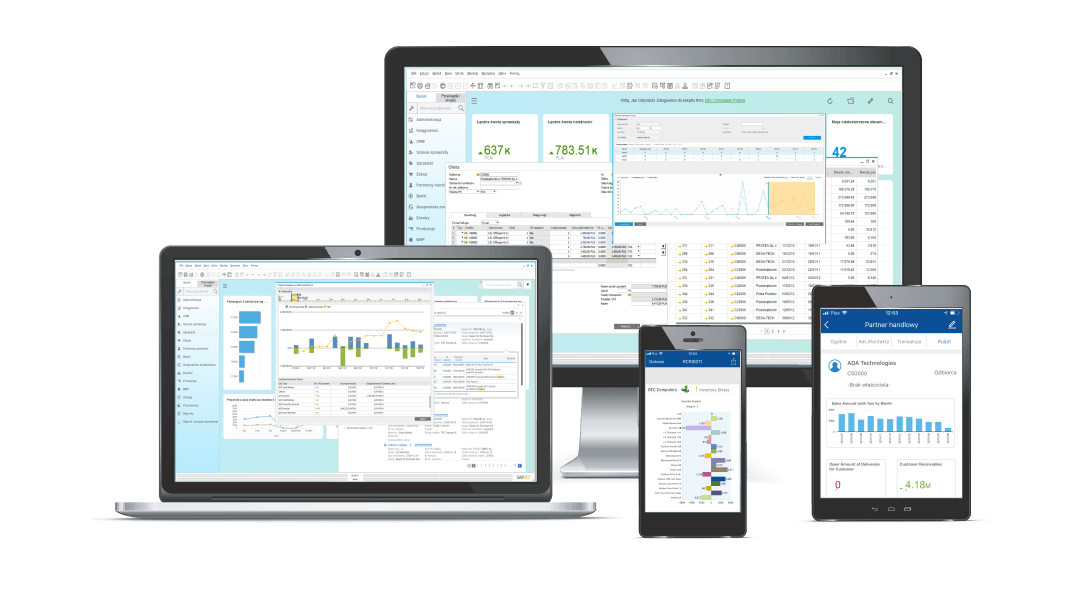
SAP SE is a global leader in enterprise application software which helps streamline business processes. It offers three types of ERP solutions including SAP Business One for small businesses, SAP Business ByDesign for mid-sized companies, and SAP S/4HANA for large enterprises. Magento SAP integration can enhance various business efficiencies in accounting, logistics, human resources, business warehouse, and intelligent analysis with Integrated Business Intelligence (BI).
- Type: Both cloud-based and on-premise
- Key features:
- Data analysis and reporting
- Customer relationship management
- Accounting
- Tracking and visibility
- Human resource management
- Financial management
- Sales and customer management
- Inventory and production functionality
- Purchasing
- Key functions:
- Export orders from Magento platform to SAP ERP
- Customer import from SAP ERP to Magento platform
- Import promotional pricing, catalog, inventory from SAP into Magento
- Automate accurate financial entry, auto update of order status, real-time stock sync to avoid no-stock scenario
- Process orders quickly to save valuable time
- Reduce manual effort
- Increase online sales and boost traffic
- Pros:
- Built-in processes tailored for a wide range of industries
- Easily customized to meet specific needs
- Designed to grow with a business
- Cons:
- Lack of the necessary infrastructure for remote access
- Limited multi-entity management
- Difficult and time-consuming to implement
- Does not offer automatic upgrades
- Pricing:
- SAP B1:
- Cloud subscription cost starts from $145 per user per month.
- On-premise licensing cost starts from $1,350 for 5 users.
- SAP ByDesign: Start from $19 per user per month.
- SAP S4/HANA:
- Cloud subscription cost starts from $20,000 per month.
- On-premise licensing cost starts from $100,000.
- SAP B1:
- Best for: Small and mid-sized businesses
You might like: Magento (Adobe Commerce) SAP integration: 7 connectors and 1 optimal solution.
4. Microsoft Dynamics NAV
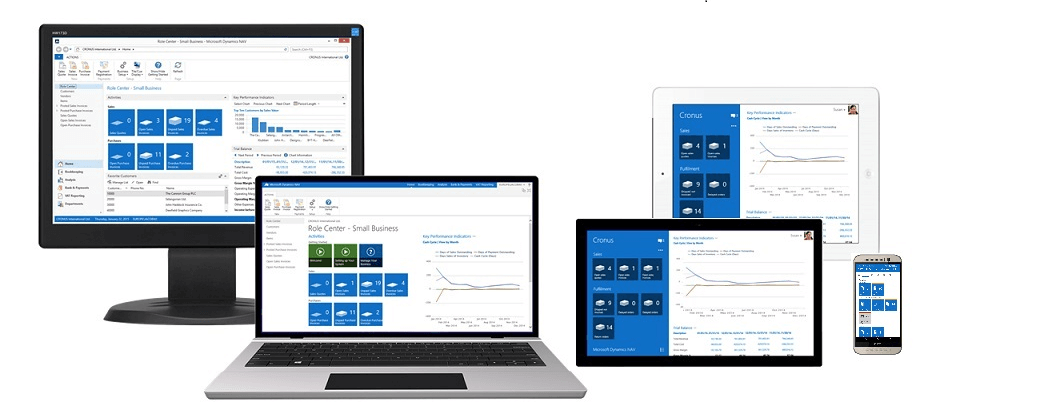
Microsoft Dynamics NAV, now known as Dynamics 365 Business Central, is a global ERP solution designed for medium and small scale eCommerce. It provides higher control over simplifying manufacturing, financial entries, operation, and supply chain. Another big advantage of this solution is its short deployment time, user-friendliness, and ease of use.
Also, Dynamics 365 Business Central gathers all data, documents, business applications, and devices to optimize the results of your eCommerce retail. It’s famous for the flexibility to deploy in the cloud or on-premises with Business Central.
- Type: Both cloud-based and on-premise
- Key features:
- Finance management
- Sales and marketing
- Sales and delivery
- Purchasing and payables
- Inventory
- Supply planning and availability
- Project management
- Service management
- Warehouse management
- Manufacturing
- Key functions:
- Manage cash, assets, and banking
- Track and manage production, inventory, orders, and vendors
- Manage campaigns, sales opportunities, contacts, and service contracts
- Track real-time visibility and analytics for insightful performance
- Create estimates, track projects, and manage capacity
- Pros:
- Integrate with Power BI to provide advanced visualization and AI-driven analysis
- Easy to integrate with MS Office, SharePoint, and Dynamics CRM
- Allow customization of the desktop interface
- Quick installation and adjustments
- Cons:
- Complex to implement and use
- Limits in support services lifecycle
- Extensive documentation can be overwhelming
- Pricing:
- Cloud subscription cost starts from $70 per user per month.
- On-premise licensing cost starts at $2,000 per user.
- Best for: Small and mid-sized businesses
5. Sage ERP
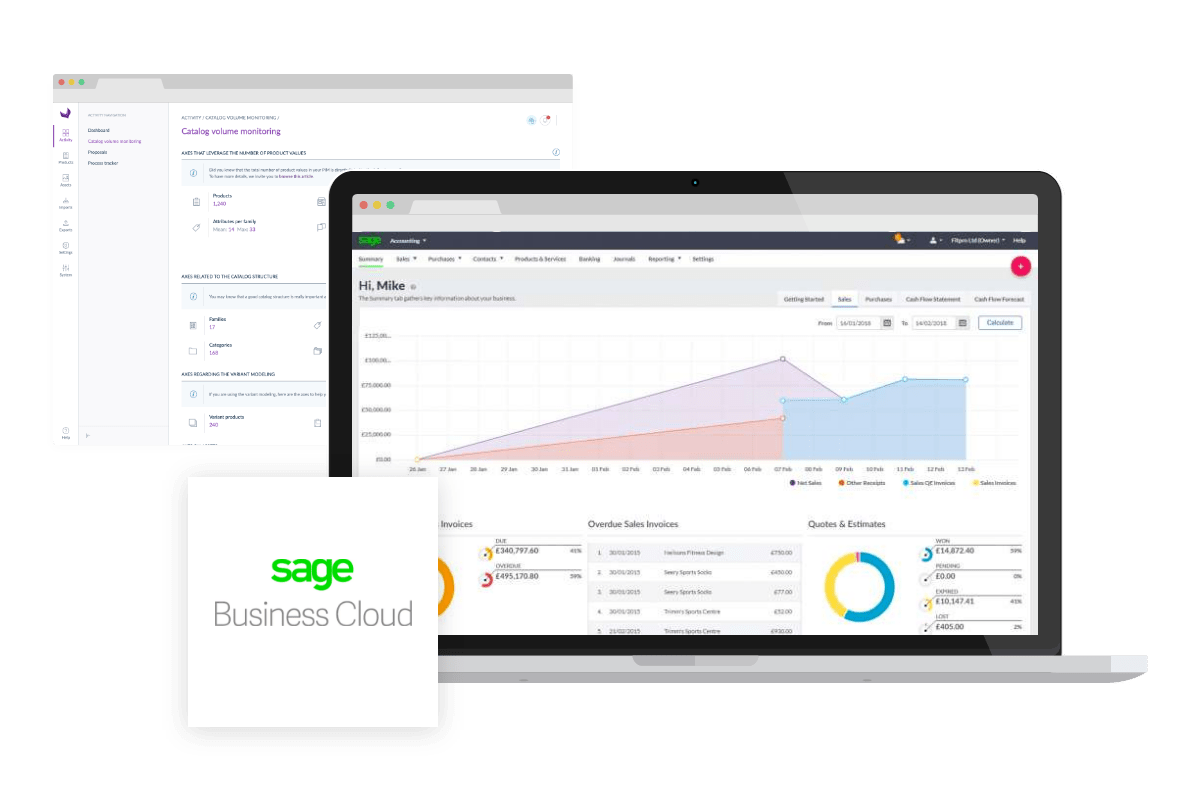
Sage is a multinational British software company based in Newcastle. Sage ERP solutions have strong points on intelligence monitoring threats and frequent update patches providing advanced protection of critical data. It’s a fully integrated system of accounting and finances, manufacturing, and distribution needs. Thanks to Sage ERP software, you can perform all business operations easily and quickly.
- Type: Cloud-based
- Key features:
- Accounting and finance
- Mobile access
- Purchasing and supplier management
- Project and vendor management
- Inventory and warehousing
- Human resource management and payroll integration
- Sales, marketing, and customer service
- Business intelligence (BI) and reporting
- Multi currency and bank feeds
- Key functions:
- Manage bill of materials (BOM), product lifecycle, purchasing process, and inventory
- Tracking labor, time, and resources in real time
- Plan projects, budget, assign tasks, and track finances
- Easily access to product, pricing, and order information
- Provide real-time analytics, alerts, and configurable dashboards
- Pros:
- User-friendly and navigable interface
- Support multiple subsidiaries or service lines under one corporate structure
- Enable seamless analytics and automation across business operations
- Cons:
- Require external consultation for specialized industries and custom development
- Slow response times from customer support
- The abundance of X3 modules increases the risk of mistakes.
- Pricing: Start from $76 per user per month
- Best for: Small and mid-sized businesses
6. NetSuite
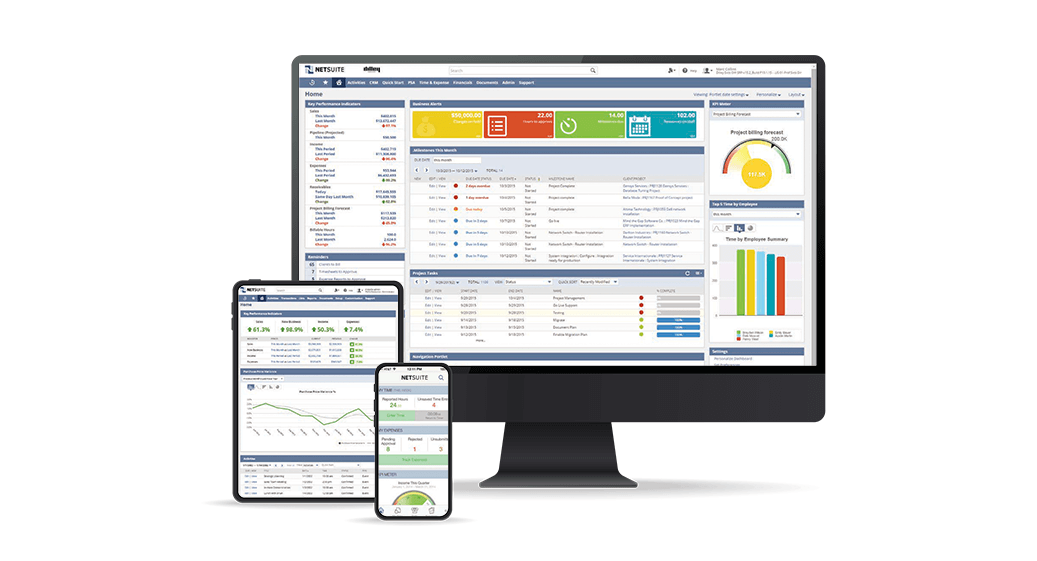
NetSuite ERP is widely used by eCommerce businesses along with Magento’s scalability and flexibility. Integrating your Magento eCommerce store with NetSuite ERP gives you the right tools to speed up your online business, including customer data and real-time reports so you can make smarter decisions and increase profits.
- Type: Cloud-based
- Key features:
- Supply chain intelligence
- Flexible payment acceptance
- Integrated process workflow
- Gross requirements inquiry
- Incentive compensation management
- Key functions:
- Manage product data in NetSuite to update in Magento
- Synchronize order data flows and customer from Magento to NetSuite
- Pass shipments in NetSuite back to Magento
- Ensure the queuing system in Magento side without waiting for NetSuite to accept the data
- Pros:
- Extensive customization options
- Excels in business intelligence
- Enable multi-channel growth
- Seamless integration with various systems, including Amazon, Salesforce, HubSpot, and more.
- Cons:
- Additional customization and support incur extra fees
- Technical support can be difficult for staff with limited technical expertise
- Pricing: Contact for a quote
- Best for: Mid-sized businesses and subsidiaries of larger enterprises
You might like: 7 best Magento NetSuite integration to streamline data transfer in 2026
7. Epicor
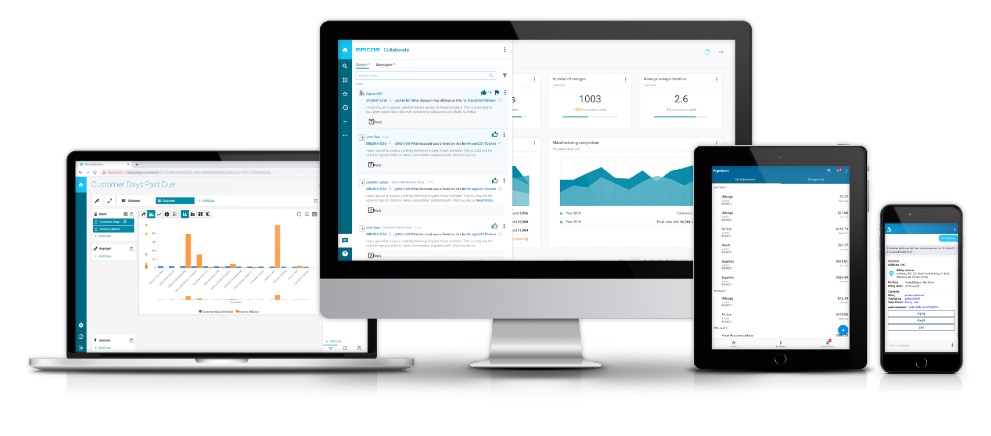
Epicor is a modern ERP solution that you can integrate with Magento, providing agility and flexibility to make smart decisions. Its highest aim is to improve customer responsiveness, streamline processes, and reduce costs.
- Type: Both cloud-based and on-premises
- Key features:
- Financials
- Human resources
- Manufacturing management
- Inventory management
- Purchasing management
- Quality management
- Sales management
- Key functions:
- In Epicor ERP:
- Process inbound cash receipts and manage sales orders
- Generate consolidated invoices, export outbound inventory, update customer data, export outbound products, post outbound invoices, export shipments, and manage outbound sales orders
- In Magento:
- Create shipments, update customer data, manage inventory, and update product details
- In Epicor ERP:
- Pros:
- A high degree of customization with various modules
- Extensive documentation and training resources
- Mobile applications enable access and management on the go
- Strong reporting and analytics capabilities
- Cons:
- Costs can escalate when businesses require additional modules or features.
- Can be overwhelming for smaller organizations that may not have enough resources
- Integrating with existing systems or third-party applications can be challenging.
- Pricing:
- Cloud subscription cost starts from $100 per user per month.
- Perpetual licensing cost starts from $2,000 per user.
- Best for: Medium to large-sized businesses
8. JD Edwards
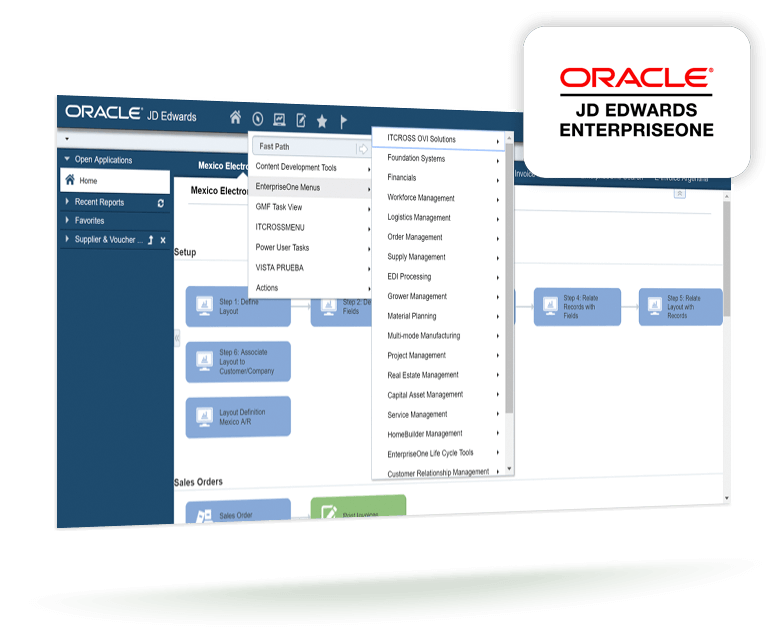
JD Edwards is a division of Oracle. The ERP solution’s full name is Oracle JD Edwards EnterpriseOne, which is suitable for all business fields of SMEs such as consumer goods, finance, human resources, manufacturing, and distribution.
- Type: Both cloud-based and on-premises
- Key features:
- Asset lifecycle management (ALM)
- Financial management
- Human capital management
- Project management
- Order management
- Manufacturing management
- Key functions:
- Sync address books and update shipment between two systems
- Sync taxes information from Oracle JD Edwards to Magento in real time
- Update real time inventory and pricing between two systems
- Pass orders and customers information from Magento to Oracle JD Edwards
- Display all offline or online orders to see full order history on the Magento
- Allow viewing receivable balances and making smart purchases
- Pros:
- User-friendly and intuitive navigation
- Flexible for specific business needs, particularly in industries like manufacturing and construction.
- Cons:
- The cluttered layout makes it difficult to find the necessary information.
- Increased costs for post-setup feature changes
- Pricing: Start from $1,000 per user per month
- Best for: Mid-sized businesses
How to choose the right ERP solution?
After you’ve understood the methods and options for integrating ERP software with Magento, you’ll probably think about how to choose the most suitable ERP. There are some criteria to consider below:
- Your business size
- Magento version of your site (Open Source or Commerce)
- Your types of data:
- Determine all Magento data points that the ERP solution will need to accept
- Match the data to correspond to fields in Magento and the ERP solution
- Understand the frequency of data transactions (real-time, multiple times per day, nightly batch)
- Determine where the data will be placed
- Features of the ERP solution you intend to adopt and the Magento ERP integration method. For example, an ERP system can handle fulfillment operations to process your orders and shipping data so it’s recommended to check the compatibility before making a choice. If you have offline stores, electronic data interchange (EDI) sales, other wholesale operations, or manufacturing processes, it’s crucial to verify whether the ERP solution can integrate with these channels.
Conclusion
Integrating ERP with Magento is possible and can bring many benefits to the eCommerce business. However, it will take huge financial resources and time to implement, so it is necessary to determine the strengths and weaknesses of the current solution, define the requirements of your business, list the criteria, and go with trusted providers.
Magento ERP integration can put you ahead in the race so it’s a worthy investment. The sooner you decide, the more you’ll save in the future.
FAQs
Is Magento an ERP?
No, Magento is not an ERP system. Magento or Adobe Commerce is an eCommerce platform that helps merchants create and manage their online stores. It still handles some similar functionalities of an ERP like managing inventory, orders, and customer information, which is perfectly fine for startups or small businesses with simple operations.
However, if your company faces challenges with more complex workflows or requires advanced capabilities, you should consider integrating a dedicated ERP system for a smart and comprehensive operation.
What is Magento integration?
Magento integration is the process of connecting your Magento backend with third-party applications. This enables seamless data exchange and synchronization of resources, such as orders, customers, and sales information in a centralized system.
What is the integration between ERP and eCommerce platforms?
ERP and eCommerce integration is connecting an ERP system with an eCommerce platform for specific needs, such as automation and complete visibility into all operations.
What is SAP Magento?
SAP Magento is Magento integration with SAP ERP software, such as SAP B1, SAP Bydesign, and SAP S/4HANA.
Is Magento a CRM system?
No, Magento is not a CRM system. However, it does offer basic CRM functionalities, such as managing accounts, tracking behavior, and segmenting based on various criteria, which is suitable for small businesses at the early stages.
For larger businesses requiring more detailed customer insights, consider investing in a specific CRM system. This helps centralize all customer data from multiple channels, evaluate qualified leads, and analyze campaign effectiveness.

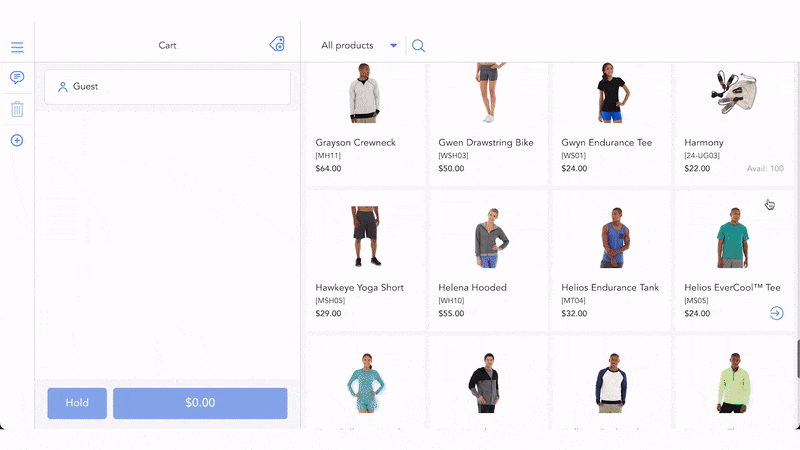

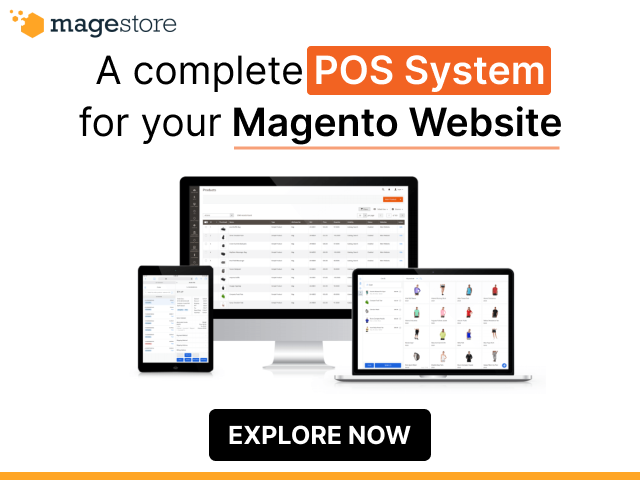



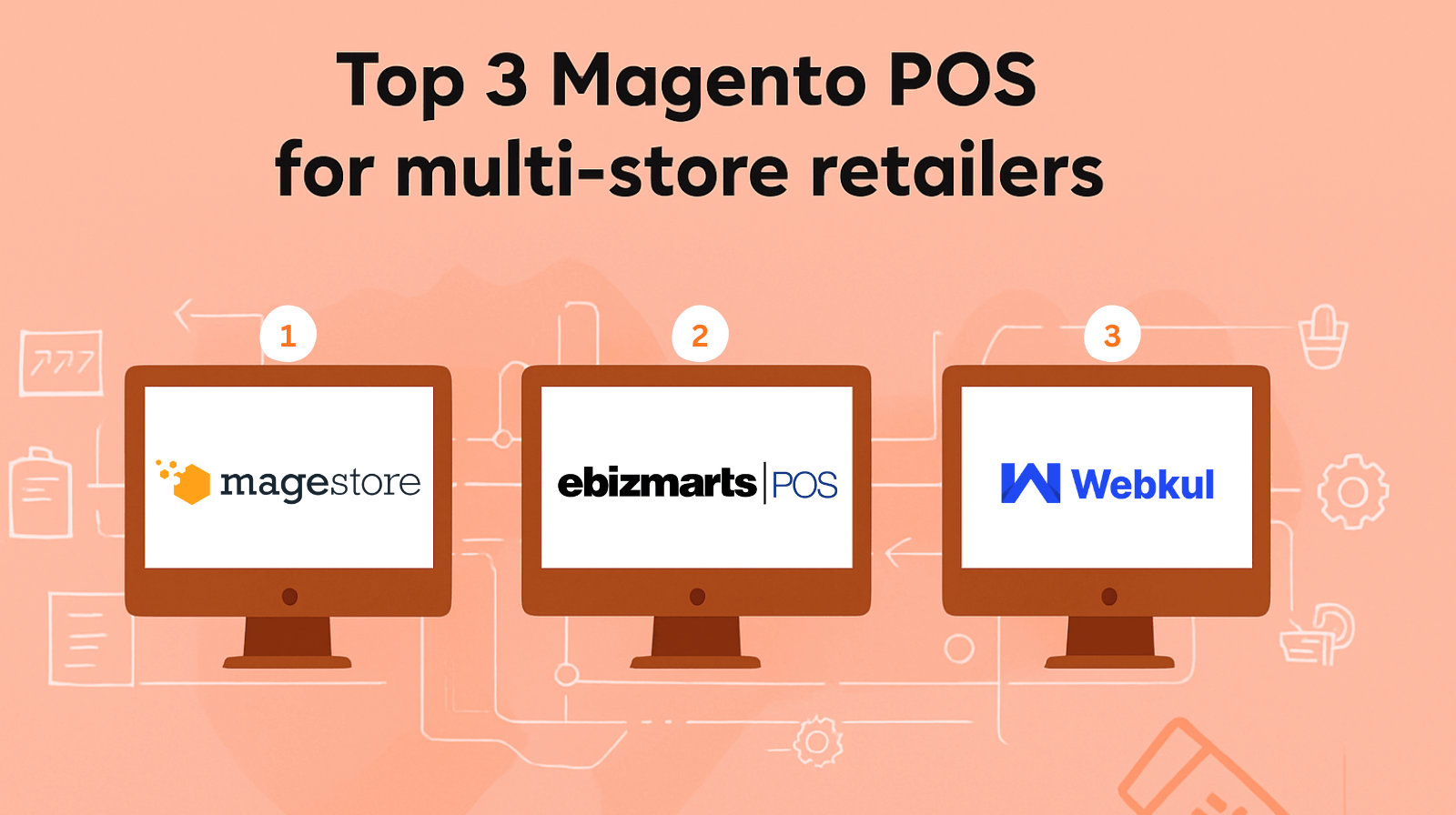




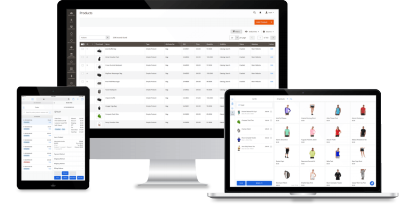

Very Informative … !!! Thanks for sharing.